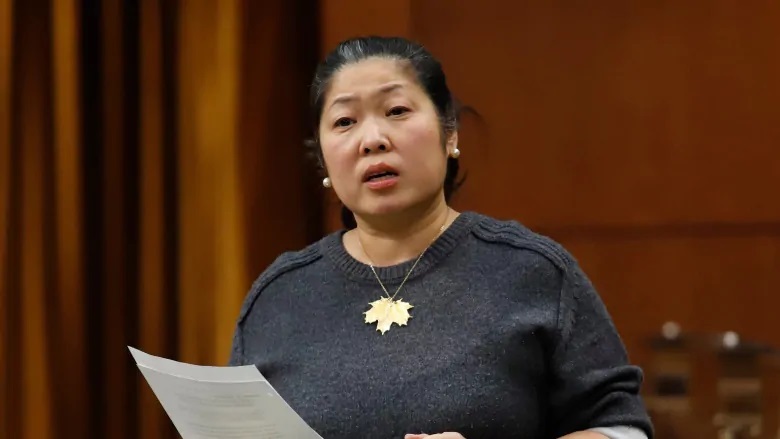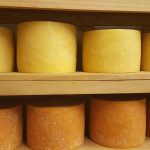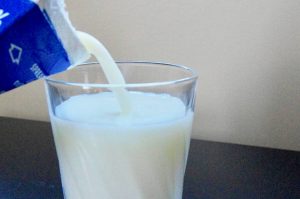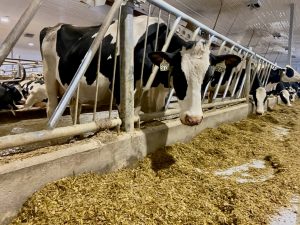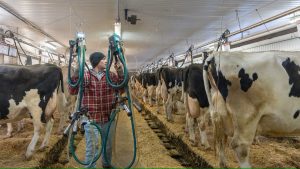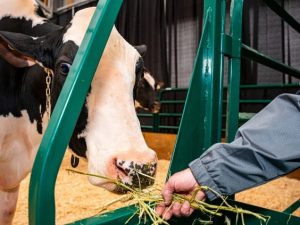
Two of the thorniest trade disputes between Canada and the U.S. — on softwood lumber and dairy — are ready for a comeback in 2021 under the new NAFTA.
On Dec. 9, the U.S. requested formal consultations under the agreement’s state-to-state dispute settlement rules (Chapter 31). Washington is challenging how Canada regulates 14 categories of dairy imports, such as cream, butter and cheese.
Outgoing United States Trade Representative Robert Lighthizer warned last June that the U.S. was unhappy, before the revised agreement had even come into force.
The big concessions President Donald Trump bragged about wringing out of Canada haven’t amounted to much for American farmers.
Two days after the U.S. kicked off its dairy complaint, Canada escalated its softwood lumber dispute by requesting a panel under the Chapter 10 rules to review countervailing duties the U.S. had revised in late November.
“Canada firmly believes that any duties imposed on Canadian exports of softwood lumber to the United States are unwarranted and unfair,” International Trade Minister Mary Ng said on Dec.11, adding that the duties harm the economic recovery on both sides of the border.
Canada already had waited months for a panel to be struck under the original NAFTA’s Chapter 19.
Last summer, Canada won a World Trade Organization case on softwood lumber. But the U.S. appealed — and because the Americans continue to block appointments to the WTO’s appellate body, that case is effectively stalled.
Ng said Canada is considering all its legal options, which could include another WTO case on lumber. But it’s not clear that would bring any remedy in the short term, beyond the prospect of another moral victory.
“The [lumber] action by Canada … really was a signal,” said Inu Manak, a research fellow at the Washington-based Cato Institute. “It’s a tit-for-tat thing … to sort of say, ‘Hey, look, we need to get some movement somewhere here … You’re accusing us of not following the rules, but you’re certainly not allowing us to benefit from the ruling at the WTO as well.'”
Hoping ‘saner heads will prevail’
Susan Yurkovich, the president of the Vancouver-based Council of Forest Industries and the B.C. Lumber Trade Council, disagrees with the suggestion that Canada’s latest request for arbitration is a response to the dairy challenge.
“We never get out of it on lumber,” she said, listing off the multiple battles she’s been fighting for years in an effort to disprove the U.S. industry’s claims that Canadian lumber is unfairly subsidized and establish that the duties payable should be zero.
“This is a growth industry and a total revenue stream for trade lawyers,” she said, citing the fact that U.S. law allows its industry to challenge Canada on the same issues again and again. “As soon as we reach resolution, we seem to find our way back here.”
But Canada fights on, hoping “that saner heads will eventually prevail,” Yurkovich said — and it can do that because the former NAFTA Chapter 19 dispute settlement process was preserved in the new NAFTA’s Chapter 10.
Demand for Canadian 2x4s remains strong in the U.S., with the pandemic driving up demand for both home renovations and single-family housing construction as more people work from home.
The latest duties just pile on top of strong prices. “We are always curious why [U.S.] consumers are not more annoyed that this has been allowed to go on for so many decades,” Yurkovich said.
The U.S. industry lacks the supply to meet this demand. The duties on Canadian lumber, Yurkovich said, simply make it easier for other offshore suppliers to gain market share.
As dysfunctional as this file has been for decades, Yurkovich said she hopes for a return to “normalcy” when a new U.S. administration takes over.
“Even though the [U.S. Commerce Department] was very biased … at least you would get a panel struck in a relatively orderly fashion,” she said. After Donald Trump became president, “all that went out the window.”
Dairy import permits offered as compensation
U.S. farmers have many beefs with Canada’s supply management system, any one of which could trigger future arbitration. But in its first official notice under the revised NAFTA, the U.S. trade representative’s office argues that the way Canada controls its dairy imports isn’t fair and equitable.
The American industry became highly suspicious when the Canadian government awarded most of its duty-free import permits not to wholesalers or retailers, but to Canadian dairy processors — as compensation.
The Americans argue that undercuts the incentive for Canadian competitors to import the full volumes that were conceded in the trade talks.
The market access Canada lost amounts to only a small fraction of what American farmers produce annually. But on principle, any chance to chip away at Canada’s protections may feel worthwhile to the USTR and the American dairy sector. And if Canada loses, other trading partners will take notice.
After dairy market concessions were made in trade deals with the European Union (the CETA) and Pacific Rim partners (the CPTPP), Canada’s industry began lobbying to acquire the import permits so that it could control which imports compete with its own products — and profit from those sales as compensation for lost market share.
The European Union seemed to see this coming. Under the CETA, it negotiated language that holds the Canadian government accountable if full volumes of European cheese imports don’t materialize. A designated share of the import permits must be set aside for “new entrants.”
But nothing in the text of the new NAFTA prevented Canada from assigning import permits to its domestic processors. So in the race to implement the new North American deal by July 1, it allocated the vast majority of the permits to its domestic industry.
Imports below negotiated volumes
Permit holders must use or return their allocations by certain dates, or risk penalties. But during the pandemic, underutilization penalties have been waived.
So how many duty-free dairy imports actually arrive? The import statistics have fuelled U.S. skepticism.
Fill rates (the percentage of what’s allowed under the agreement) are relatively high for European cheeses, but lower for industrial cheeses (like those on frozen pizzas) and nowhere near the full volumes for most CPTPP categories.
Canadian industry officials suggest there are market forces at work: Canada’s ingredient cheeses are cost-competitive and importing perishable dairy products from New Zealand or Australia isn’t practical. By contrast, fine cheese imports are profitable: higher margins offer incentives for permit holders to import all they can.
When the U.S. filed its complaint on Dec. 9, the fill rate for NAFTA cheeses sat at about 60 per cent of what was allocated for 2020. (It’s higher now.) Nearly half of those imports were shipments of mozzarella that may have originated in U.S. facilities of Canadian processors
Chapter 31 consultations are closed-door, diplomatic processes meant to mediate and avoid arbitration. They usually start within a few weeks of a complaint, although the holiday season and the transfer of power to a new U.S. administration may delay these talks.
“This is an issue that will be addressed government to government,” said Mathieu Frigon, the president and CEO of the Dairy Processors Association of Canada. “Minister Ng has stated that she is confident that Canada is meeting its obligations under the [Canada–U.S.–Mexico Agreement]. DPAC agrees — the [tariff rate quota] allocations by the federal government are consistent with the terms of the agreement.”
In a year-end interview with CBC News, Canada’s ambassador in Washington, Kirsten Hillman, reinforced this line.
“We are firmly of the view that we are in compliance, that our implementation reflects the negotiated outcome,” she said. “We’re quite confident in that.”
New administration, different tone?
President-elect Joe Biden’s nominee for agriculture secretary, Tom Vilsack, will be reprising the role he played in Barack Obama’s cabinet. In the interim, he’s been the president and CEO of the U.S. Dairy Export Council.
Needless to say, he knows this dispute well.
“Canada should get ready for quite a difficult discussion,” Manak said. “The next administration is certainly not going to let this slide.”
So a very happy new year, then, to the lawyers who will bill by the hour as they debate the precise interpretation of each country’s obligations under the new NAFTA.
But when Biden’s USTR pick, Katherine Tai, takes over, she may take a new approach and bring a change in tone.
Manak describes Tai as a very technical and strategic thinker who has a “very different generational perspective” — unlike her predecessor Lighthizer, her perspectives on free and fair trade were not formed in the pre-NAFTA thinking of the 70s and 80s.
Does this translate into a different attitude on Canadian files?
Tai’s priority, Manak said, will be China. And she’s already signalling more cooperation with allies — a shift away from the Trump administration’s ‘America first’ approach.
If that happens, maybe these Canadian disputes will get easier.
“You can’t be involved in really contentious litigation and ask for help in something else,” Manak said.
